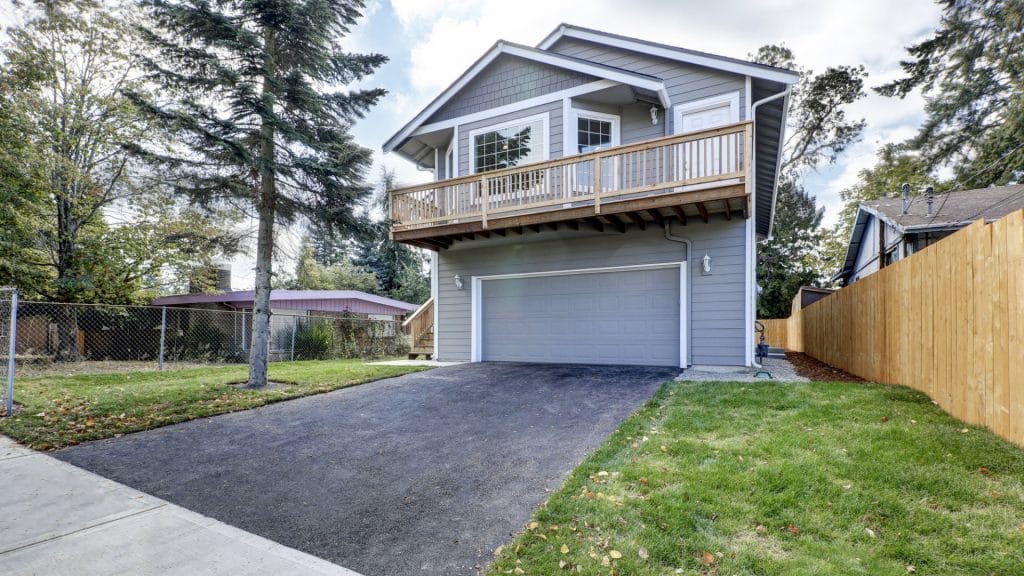Garage Apartment Auxiliary Dwelling: Auxiliary Living Spaces in Maryland and Washington D.C.
If your current home is the last home you plan to live in, or if you have lots of family who come for extended visits, you may occasionally wish you had something better than a simple guest room. Wouldn’t it be nice to have your kids and grandkids on the property but in their own space? You can!
Does your home have a substantial space not being used to it’s potential? Maybe you have a four-car garage but only two cars. You might have a separate studio behind the house, or space to add on. Perhaps your kids have flown the nest and now you have a wing of the house that’s no longer necessary as is. In any of these cases, it’s possible to morph the space into a usable auxiliary dwelling with fabulous benefits to you. That is to say, it could be turned into a mother-in-law’s quarters, a guest house, or even a rentable unit.
Building out a rentable unit gives you maximum bang for your buck because the banks recognize it as earning a substantial return on investment, or additional income at your home address. But building out living quarters doesn’t have to serve as an income generator. Another great benefit of live-in quarters is the ability to house visiting family members, or, even better, moving in family you want to care for or who will be caring for you. Busy professionals who want a live-in nanny to care for young children love having these separate living quarters on site. As auxiliary living spaces can be separated such that you don’t necessarily share the main house, it’s also a wonderful way to move in hired late-life caretakers. This way, a live-in helper has their own designated space, but quick access to you when needed.
 If you’re planning to age-in-place in your current home, an auxiliary space can serve different purposes at different points in time. You might start by building an apartment over your garage or by renovating your basement, and rent it as an AirBnB lodging or to a full-time resident, generating income from the space. Then, when it’s time to get some live-in help, pull it from the rental market and change it to a permanent residence. That way the space pays for itself in the first years, and serves a critical purpose later in life, without you having to move. You increase the value of your home, produce some secondary income, and rest easy knowing you have a care plan in place after retirement.
If you’re planning to age-in-place in your current home, an auxiliary space can serve different purposes at different points in time. You might start by building an apartment over your garage or by renovating your basement, and rent it as an AirBnB lodging or to a full-time resident, generating income from the space. Then, when it’s time to get some live-in help, pull it from the rental market and change it to a permanent residence. That way the space pays for itself in the first years, and serves a critical purpose later in life, without you having to move. You increase the value of your home, produce some secondary income, and rest easy knowing you have a care plan in place after retirement.
Most recently we’ve built apartments over a garage, and the residents are ecstatic with the results. The most popular auxiliary spaces are free-standing garages behind a home, where there is or can be an upstairs apartment. But basements, additional wings, and other possibilities all exist. An auxiliary space typically has a bedroom, a kitchen or kitchenette, a full bath, and a living room. Often, they have a separate entrance from the main house, though that’s not always the case. Many have their own area of yard as well. The size of the unit varies according to the size of the existing home.
There are lots of options on how to produce such a living space at any given home in the Maryland and Washington D.C. areas and Winthorpe has experience in all of them. We’re well versed in the codes and allowable options in D.C. and Maryland. Many of these neighborhoods have alleys, which gives us great flexibility, making auxiliary spaces a snap to add. There are lots of technical qualifications that we review for each individual project so we can advise you on what the best options are for your home in your particular neighborhood.





